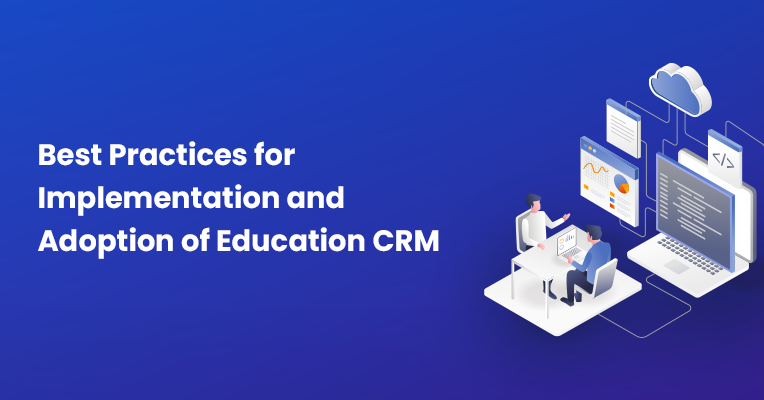In the rapidly evolving landscape of global education, the use of Customer Relationship Management (CRM) systems has become a necessity for study abroad consultants. A purpose-built Education CRM can significantly enhance efficiency, productivity, and overall performance by centralizing student data, managing communication, tracking opportunities, and handling financial transactions. This blog post will delve into the best practices for implementing and adopting an education CRM.
Listing the Best Practices for CRM Implementation and Adoption
Implementing and adopting a CRM (Customer Relationship Management) system for education organizations can be a complex process, but following best practices can help ensure successful implementation and adoption. Here are eight key best practices with explanations:
Define Clear Objectives and Goals
Before implementing an education CRM, clearly define the objectives and goals you want to achieve. Whether it’s improving student engagement, streamlining communication, or enhancing enrollment management, having specific goals will guide the CRM implementation process and measure its success.
Involve Key Stakeholders
Engage all relevant stakeholders, including teachers, administrators, IT staff, and other personnel, in the decision-making process. Understanding their needs and concerns will help you select the right CRM system that meets the requirements of all parties involved.
Choose the Right CRM Solution
Research and select a CRM solution that aligns with your educational institution’s unique needs and requirements. Consider factors such as ease of use, scalability, integration capabilities, data security, and support services.
Provide Comprehensive Training
Ensure that all users, from staff to faculty, receive comprehensive training on how to use the CRM system effectively. Training sessions should cover basic functionalities, data entry, report generation, and troubleshooting common issues. Proper training will boost user confidence and maximize the system’s potential.
Implement Incrementally
Avoid attempting a full-scale implementation all at once. Instead, implement the CRM system incrementally, starting with key features and functionalities. Gradual adoption allows users to get comfortable with the system and provide feedback for improvements along the way.
Promote Data Quality and Maintenance
Data is the backbone of any CRM system. Establish data quality standards and processes to ensure accurate and up-to-date information. Regularly clean and maintain the data to prevent duplicates and errors.
Encourage User Engagement and Collaboration
Foster a culture of user engagement and collaboration with the CRM system. Encourage users to share success stories, best practices, and insights to inspire others to use the CRM effectively. Providing a platform for open communication and feedback can lead to continuous improvements.
Measure and Evaluate Performance
Continuously monitor and evaluate the performance of the CRM implementation against the defined objectives and goals. Utilize analytics and reporting tools to track key performance indicators (KPIs) such as student enrollment rates, communication efficiency, and customer satisfaction. Regular assessments will help identify areas for improvement and make data-driven decisions.
By following these best practices, education organizations can ensure a smooth CRM implementation and foster its successful adoption, leading to enhanced efficiency, improved communication, and better student engagement.




